Start at the beginning: Getting to know DJ Guy
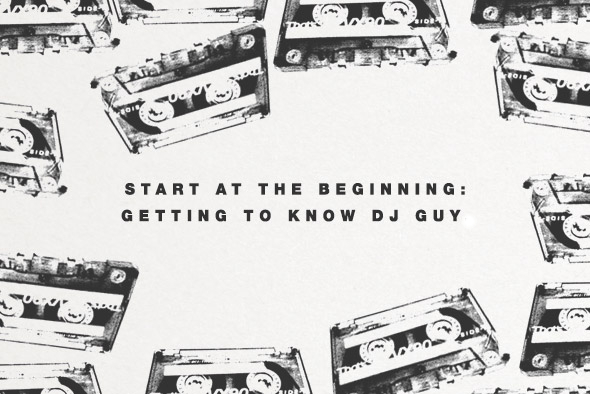 Oli Warwick lifts the lid on Guy Evans, a producer coming to light with a release on All Caps after decades of DJing and producing in the Cardiff underground.
Oli Warwick lifts the lid on Guy Evans, a producer coming to light with a release on All Caps after decades of DJing and producing in the Cardiff underground.
“The last interview I did I had a track featured in Future Music magazine back in 1994,” chuckles Guy Evans as we sit down to share a drink on a bitter January afternoon in Bristol. It’s a short time before his first solo release is set to come out on All Caps, marking twenty years since his music last scored any press attention. The affable, long-haired chap of diminutive stature (he called himself UK Little Guy for a short while) sitting opposite me certainly doesn’t have the air of a jaded music industry veteran, but rather someone still brimming with youthful enthusiasm for his craft and the diverse nature of electronic music as a whole.
It was the impending release on the Glasgow-based label that first placed him on the radar, as a promo emerged of an artist with scant background information and some archival work from the early ’90s that had never seen the light of day before. The quality of the melodic techno contained within was enough to pique interest and inspire some digging, leading to a Bandcamp page groaning under the weight of unearthed gems ripped off a backlog of tapes, starting back in 1992 when Aphex Twin’s inaugural Analogue Bubblebath single had been out but a year. It’s worth bearing that reference point in mind as there’s a similar spirit of romantic sonic exploration in the work Evans was producing using a relatively primitive set up at that time, all yearning synths and intricate drum machines marching forth into unknown territory.
While production has been a huge part of Guy’s life’s work for the past twenty-odd years, he places greater emphasis on his time spent playing records in and around his native Cardiff. “DJing’s been my main passion,” Guy explains. “I started DJing when I was like 13 or 14 and I only had one turntable with a pitch control. The other one didn’t so I could only mix one to the other and that would be it.”
Catching the electro bug like so many did in the ’80s through the Streetsounds compilations, by the age of 17 Guy was bagging his first gigs and it wasn’t long before he had established himself as one of the more prolific spinners on the nascent rave circuit in Cardiff.
“I DJed weekly from 1990 up until 2002-03,” says Guy. “The scene in Cardiff was amazing back then. I was resident at Valentinos, and we were playing 1990 breakbeat rave, Shut Up & Dance and Belgian techno, R&S records, early Warp stuff, just what was coming out at the time.”
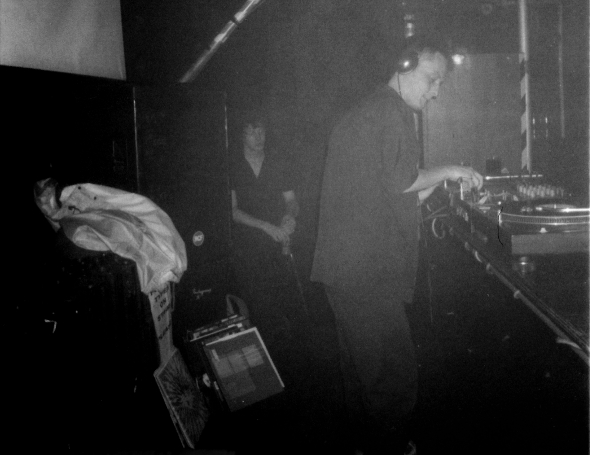 His eyes light up when talking about these times, but Guy’s delivery is also a humble one, happily playing down his own role in these events despite having a finger seemingly in seemingly every rave-related pie in the Welsh capital. For a scene that splintered quickly after promoters started turning to big guests outside of the city, in its heyday Guy was something of a force to be reckoned with. You need only ask fellow city dwellers to get a feel for that.
His eyes light up when talking about these times, but Guy’s delivery is also a humble one, happily playing down his own role in these events despite having a finger seemingly in seemingly every rave-related pie in the Welsh capital. For a scene that splintered quickly after promoters started turning to big guests outside of the city, in its heyday Guy was something of a force to be reckoned with. You need only ask fellow city dwellers to get a feel for that.
“I used to see [Guy’s] name on flyers that I would collect when I was a kid and hear him on mixes before I could even get into any clubs,” explains Joel Lipman, otherwise known as producer Elmono, a long-time friend of Guy’s who recently came to ground with a release on Pinch’s Cold Recordings. “For me at that time, his name always had this enigmatic nature to it.”
“I grew up in Cardiff and tons of people in the early 1990s were raised on his mixtapes,” adds Louis Digital, former Arcola artist and one half of Unspecified Enemies. “He used to make very experimental combinations. I’ll never forget entering some standard Queen Street nightclub in like 1992 and hearing Guy playing [Aphex Twin classic] “Green Calx”.”
It becomes apparent the more Guy talks about his DJing that he was committed to pushing the artistic potential of the practice as far as he could. He speaks of sending a demo tape of a vinyl-only mix to seminal early ’90s rave club Eclipse in Coventry and getting an incredulous phone call from the 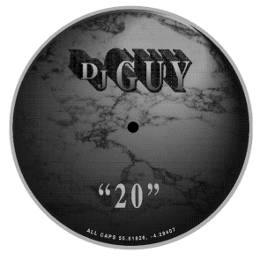 staff who accused him of tricking the mixes with a multi-track. “When I mixed I’d lock a record for four or five minutes, and I’d see that as a creative act in itself, like you wouldn’t be able to buy that in a shop,” Guy points out. “It would always be for the moment. I’d try and lock a record that everybody knows with a record that’s really obscure for four or five minutes, that was a big thing for me. Trying to create something with two records.”
staff who accused him of tricking the mixes with a multi-track. “When I mixed I’d lock a record for four or five minutes, and I’d see that as a creative act in itself, like you wouldn’t be able to buy that in a shop,” Guy points out. “It would always be for the moment. I’d try and lock a record that everybody knows with a record that’s really obscure for four or five minutes, that was a big thing for me. Trying to create something with two records.”
While, in an era of technological convenience, the concept of mash-ups and edits is not such a daring one, the standards were very different in the 1990s, reliant on devout practice and sharp skills to keep disparate records on course. As Guy meekly points out, when he first graduated from fervent bedroom practice to playing his first club sets with a hyper-critical eye on his own abilities, he was surprised to see high-profile guests fluffing mixes left right and centre in comparison to his honed technique.
Even before he was DJing, Guy was already immersing himself in the possibilities of electronic music from the earliest possible juncture, which he credits for his technical affinity once he graduated onto a set of record decks. The process started with an interface for the Sinclair Spectrum ZX, the SpecDrum, which came out in 1986, and afforded the user the chance to program beats using samples from the legendary LinnDrum machine.
“Incredibly it taught me loads about how to program beats in sixteen step 4/4 rhythms, similar to rhythm structures which are still used today,” Guy explains. “I really can’t stress enough how much I learnt from using the SpecDrum.” From there Guy moved on to borrowing keyboards and samplers from school before progressing to experiments with his older brother’s four-track cassette deck, on the rare occasions he was allowed to borrow it. “I’d get my favourite records and I’d do crazy stuff like, you know nowadays you can get music into a bit of software and loop it forever?” Guy asks. “I’d record eight bars of a break, rewind it, let the four play, overlap the next eight bars on the last four, overdub it again and again, pause button all the way.”
Once he was bitten by the rave bug, Guy’s money was channeled into constantly buying records to feed his busy DJing schedule, which would often find him playing three nights a week, leaving his home studio set up as a secondary concern that lacked any major investment. However in 1993 he got involved with a community project named Grassroots, still running to this day, which provides young people with access to a recording studio and production equipment. Employed there as a full-time technician for some seven years, the space also gave Guy access to superior equipment to what he had at home.
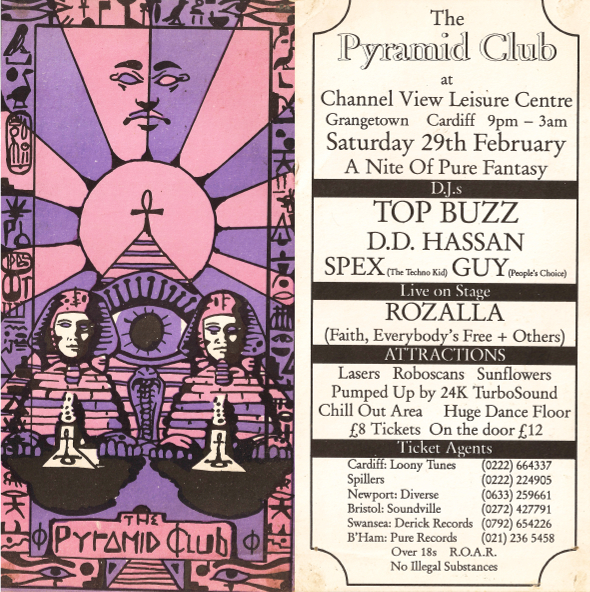 “When I went there I saw Cubase on the Atari ST,” he recalls, “and it was incredible being able to sequence music, ‘cos I’d never seen that happen before.”
“When I went there I saw Cubase on the Atari ST,” he recalls, “and it was incredible being able to sequence music, ‘cos I’d never seen that happen before.”
If you delve into the Archived Tracks releases on Guy’s Bandcamp page, you can find a detailed description for each song that lists the equipment used and the location it was recorded in, no mean feat to recall considering the time that has passed since. It also makes for a tangible way to chart the progression of Guy’s craft, as the arrangements grew in complexity and the range of sounds matured depending on the equipment he could lay his hands on.
“I’d borrow this effects unit from work called the [Alesis] Quadraverb,” Guy reveals. “Sometimes I might do fifteen tracks in a weekend, huge output. It was about borrowing this piece of equipment for the weekend and you’re like, ‘right, I’m gonna get the most out of this now’.”
The work at Grassroots led to Guy helping run DJ workshops up and down Wales alongside the aforementioned Elmono and Stagga, a local dubstep and hip hop producer. Both artists attribute their entry into music production to Guy, holding him in high estimation for his expertise and guidance, not to mention his humility.
“He was a bit of a mentor to a bunch of us back then,” explains Stagga. “He could always wow me with his intimate knowledge of DJing, like how he could beatmatch records seamlessly without the use of headphones.”
As the ’90s wore on, Guy’s DJing was veering more towards jungle and drum & bass, as something of a logical progression from the breakbeat rave sounds he cut his teeth on. This largely manifested itself in his residency at Silent Running, a pillar of drum & bass in Cardiff at iconic venue Clwb Ifor Bach, where he shared spinning duties with a then little-known High Contrast (pictured below). This may seem at odds with the techno and ambient creations that typify Guy’s studio output, but he has never been hugely concerned about pandering to the stylistic stereotypes of whatever aspect of his creativity he is delving into.
“I try not to pigeonhole music too much you know?” he explains. “It’s fast, it’s slow, it’s hard, it’s soft, blah-blah-blah, you know? I look at it in the fundamentals.”
This makes for a neat correlation with his emergence on All Caps. The label has, to this date, released records from Alex Coulton, Helix and Kowton, all comparatively young producers with roots in the convoluted bass music scene. There is undoubtedly a techno bent to the releases thus far, but more like a modern extrapolation compared to Guy’s resoundingly classic productions. It could certainly be considered a swerve by Bake and his fellow label founders to release a record from the producer, but it speaks to Guy’s own 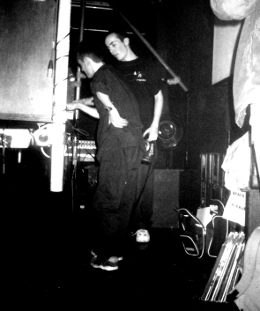 generic ambiguity, and on listening to the record the tracks are certainly not straight-up dancefloor bangers. “05” in particular hops around a jerky rhythmic template that falls somewhere between broken beat and four to the floor. Tellingly, this also isn’t the first time Guy’s music has been in this contextual flux. While the All Caps release may be a debut solo effort, there is one forgotten gem tucked away on a release that barely managed to breach the Cardiff city limits.
generic ambiguity, and on listening to the record the tracks are certainly not straight-up dancefloor bangers. “05” in particular hops around a jerky rhythmic template that falls somewhere between broken beat and four to the floor. Tellingly, this also isn’t the first time Guy’s music has been in this contextual flux. While the All Caps release may be a debut solo effort, there is one forgotten gem tucked away on a release that barely managed to breach the Cardiff city limits.
The Undisco EP was a compilation that saw Guy share wax space with his friend Josh Saunders (who operated as Undisco) and another producer named Bud, with a mixture of trip hop, jungle and techno spread across four tracks on a white label without distribution. Despite this release being so fleeting, it still got mentioned by Louis Digital in the Soundcloud comments for the new All Caps release. It of course raises the question of why more of Guy’s material didn’t make it out at the time of conception. He admits he did pass out occasional tapes to DJs he played alongside, but once again the reluctance to self-promote seems to linger over Guy’s actions. “I think the reason I didn’t release any stuff back in the day was that I didn’t realise that tracks I was hearing were mastered professionally,” Guy points out. “I always thought that mine were lacking slightly. I’m my own worst critic. Maybe that’s why I’m so grateful that Bake from All Caps got involved.”
The power of Soundcloud cannot be underestimated, as Bake stumbled across a legion of Guy’s archive tracks (before they were migrated to the Bandcamp page) as they were uploaded following Guy’s completion of a music technology degree in 2011. This started the conversation and editing process that led to the release that has, in many ways, kick-started Guy’s career. As for the route to take from here, of course Guy remains philosophical, with the hope of scoring a few DJ gigs and potential releases in the pipeline. As well as a staggering time capsule of tunes to be unearthed, Guy is of course still making music now, in particular implementing techniques acquired in his degree from found sound sampling to sidechain compression. Elmono perhaps explains the correlation between Guy’s old material and new most accurately.
“The fact that these [old productions] still sound so relevant today is a testament to Guy’s skill and natural ability to write good music,” he explains, “and it’s not just his old stuff. His recent tracks are equally as on point and still manage to capture that early techno vibe.”
So it is we stand at a unique crossroads with Guy, a new discovery with a lifetime of musical endeavours already behind him, a wealth of material yet to be divulged and any number of possibilities for what might come next. As well as his solo work he’s getting in the studio with Elmono, while keen interest from the likes of Detroit champ MGUN could lead on to interesting opportunities in the future. Either way there’s a reassurance that comes with those whose talent is slow-released; devoid of all that flash-in-the-pan hype that beleaguers music constantly. For now, let’s sit back and wait.
Interview by Oli Warwick
Photos and flyers used with the permission of the artist.